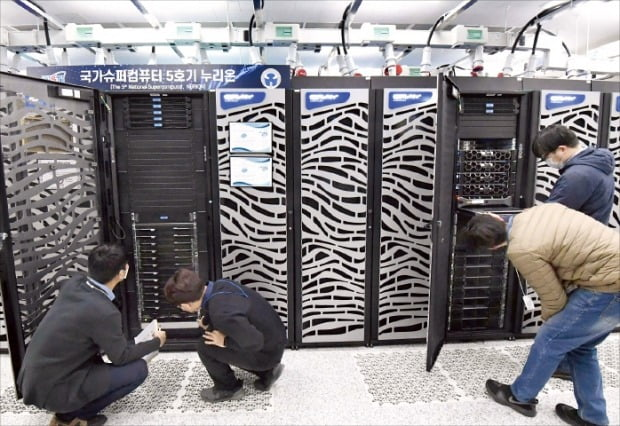
Korea: Supercomputer “Nurion”: Korea Institute of Science and Technology Information (KISTI)
Korean supercomputer “Nurion”
13.9 petaflops.
The ranking is 21st as of November last year.
It fell four levels in five months from 17th place in June last year.
KISTI: Mr. Hong Taeyeon
Currently, 40% of Nurion’s capacity is being used in the fields of chemistry and biotechnology such as molecular dynamics.
Recently, South Korea’s investment in basic science has receded.
Investment in the field of basic science is “the basis of destructive science and technology and extremely important.”
South Korea ・ Basic science investment decreased:
In 2019, the investment amount of the five major basic sciences such as mathematics, physics, and chemistry will be 2,377.4 billion won.
It decreased by 4% from 2,473.8 billion won in 2015.
South Korea ・ R & D investment increased:
During the same period, South Korea’s R & D investment increased by 10% from 17,519.9 billion won to 19,259.7 billion won.
Korea Engineering Hanlin Academy: Chairman Kwon Ogyeong
The current structure of government R & D to develop unused technologies is problematic.
In the future, it must be changed to a “result-centered model that evaluates the creation of core patents and allocates budgets, etc.”.
Chuo University: Professor Song Jae Yong
The Korean scientific community believes in the “Impact Factor (IF) of journals published in treatises” like a religion.
Unless an evaluation standard is established to replace IF, Korea’s basic science will not develop forever.
Innovative new technology should be evaluated:
The IF, which is the number of citations of a treatise divided by the number of publications, only indicates “how much the treatise is being used in an already established field.”
It is an inappropriate indicator for “evaluating treatises on the subject of innovative new technologies that create new markets.”
Japan: “Fugaku” of RIKEN / Fujitsu
jumped to the top, overtaking the US IBM “Summit”, which had been the undisputed number one.
Measured performance 442 petaflops (44K 2000 trillion operations per second)
Achieves performance that reaches three times that of the summit’s 148.6 petaflops.
USA: Frontier announced
The United States has announced that it will announce the “Frontier”, an exaflops-class supercomputer capable of calculating 100 K times per second next year.
JoongAng Ilbo
https://s.japanese.joins.com/JArticle/275672?sectcode=330&servcode=300
El Capitan: Equipped with AMD, breaks the wall of 2 exaflops
Upcoming El Capitan Supercomputer
Equipped with AMD CPU and GPU, it boasts a peak performance of 2 exaflops or more.
The system will be available in early 2023.
Established at Lawrence Livermore National Laboratory (LLNL).
It will be used by the US National Nuclear Security Administration (NNSA).
If it were in operation today, it would be more powerful than the next Top 200 supercomputer combined.
DataCenter Cafe
https://cafe-dc.com/hpc/el-capitan-supercomputer-feature-amd-chips-break-2-exaflops-barrier/
Nurion・National Supercomputing Center:5th Supercomputer Summary
Nurion is a system consisting of compute nodes,
CPU-only nodes, Omni-Path interconnect networks, Burst Buffer high-speed storage, Luster-based parallel file system, and water cooling device based on Rear Door Heat Exchanger (RDHx).
Nurion’s compute nodes
are 8,305 Intel Xeon Phi processors (named “Knight Landing”) nodes and CPU-only nodes are 132 Intel Xeon processors (named “Skylake”) nodes.
Total theoretical performance is 25.7 petaflops, which was ranked 11th in the world in June 2018
(http://www.top500.org).